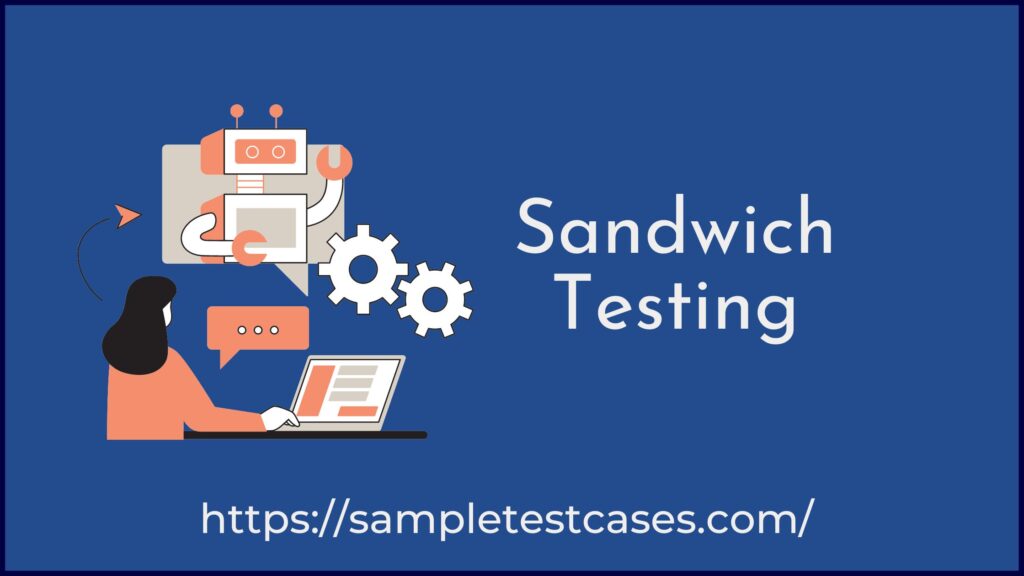In this article, we’ll explore what Sandwich Testing is, how it works, its advantages, and when to use this innovative approach. In the world of software development, where methodologies and testing practices are continuously evolving, there’s a unique and tasty approach known as “Sandwich Testing.” While it may not involve actual sandwiches, it’s a metaphorical way of describing a testing strategy that combines various testing techniques and layers to ensure the quality and reliability of software applications.
What Is Sandwich Testing?
Sandwich Testing is a comprehensive and layered approach to software testing that involves combining different types of testing techniques, such as unit testing, integration testing, and system testing, to create a multi-tiered testing “sandwich.” This metaphorical sandwich consists of various layers, each representing a different level of testing, with the ultimate goal of delivering a high-quality and reliable software product.
The layers typically found in a Sandwich Testing approach include:
- Bread Layer (Unit Testing): This is the foundational layer of the sandwich. It involves testing individual components or units of code in isolation to ensure that they function correctly. Unit testing is often automated and focuses on specific functions or methods.
- Filling Layer (Integration Testing): The filling represents the integration layer, where tested components or units combine and tested as a group. Integration testing verifies that these components work together seamlessly and that data flows correctly between them.
- Condiment Layer (System Testing): The condiment layer represents system-level testing, where the entire software application test as a whole. This phase ensures that all components, integrations, and interactions within the system are functioning correctly.
- Top Bread Layer (Acceptance Testing): The top bread layer represents the final testing phase, where the software evaluate against predefined acceptance criteria. This often involves testing the application from an end-user perspective to verify that it meets user requirements and expectations.
Advantages of Sandwich Testing
Sandwich Testing offers several advantages that contribute to the overall quality and reliability of software applications:
- Comprehensive Coverage: By incorporating multiple layers of testing, Sandwich Testing provides comprehensive coverage, from individual components to the entire system.
- Early Issue Detection: Unit testing at the bread layer helps identify and address issues at the earliest stage of development, reducing the cost of fixing defects later in the process.
- Effective Integration: Integration testing in the filling layer ensures that different components work harmoniously together, reducing the likelihood of integration issues in the final product.
- User-Centric Testing: System and acceptance testing in the condiment and top bread layers focus on the user experience, helping ensure that the software meets user expectations.
- Automation Potential: Unit and integration tests are often automated, allowing for rapid and repetitive testing, which can accelerate the development cycle.
- Efficient Debugging: When issues arise, This Testing provides clear boundaries for where problems may be occurring, making debugging more efficient.
When to Use Sandwich Testing
Sandwich Testing is a flexible approach that can be applied in various scenarios, including:
- Complex Software Systems: When dealing with complex software systems with multiple components and interactions, This testing helps ensure thorough testing and integration.
- Continuous Integration/Continuous Delivery (CI/CD): This testing aligns well with CI/CD pipelines, where automated unit and integration tests are run frequently to catch issues early.
- User-Centric Applications: For applications where the user experience is critical, such as web and mobile apps, This testing ensures that the end product meets user expectations.
- Quality-Centric Development: In development environments that prioritize software quality and reliability, This testing is a valuable approach to maintain high standards.
- Large Development Teams: In scenarios where multiple development teams or contributors work on different parts of a project, This testing helps ensure that their work integrates seamlessly.
Conclusion
Sandwich Testing is a unique and effective approach to software testing that combines different layers of testing techniques to create a comprehensive and reliable product. By testing individual components, integration points, system behavior, and user acceptance, Sandwich Testing ensures that software applications meet high-quality standards. As software development continues to evolve, this approach offers a flavorful blend of testing practices that contribute to the success of modern software projects.
